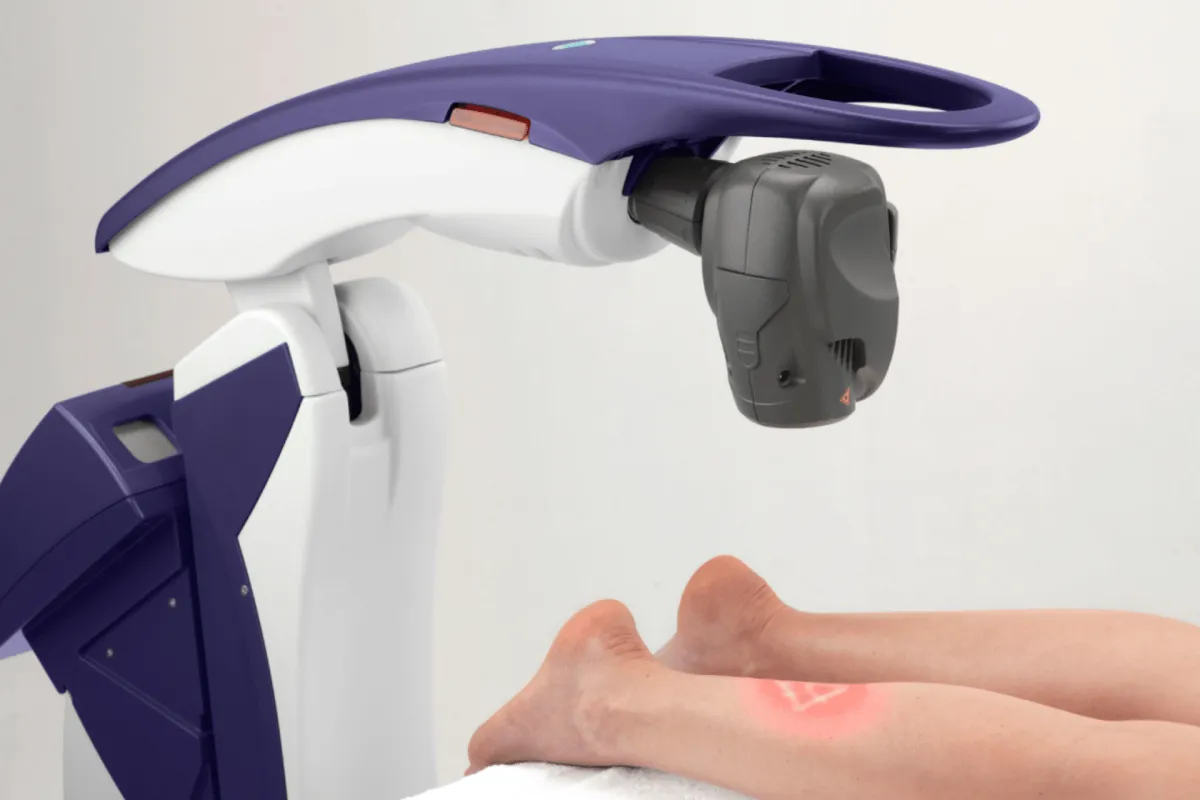
MLS Laser Therapy: Mechanism, Clinical Use, and Comparative Insights
MLS Laser Therapy (Multiwave Locked System) is a non-invasive medical treatment that utilizes synchronized dual-wavelength laser emissions to stimulate tissue repair, reduce inflammation, and manage pain. It falls under the broader umbrella of low-level laser therapy (LLLT)—also known as photobiomodulation (PBM)—which has been studied extensively over the past few decades for its applications in musculoskeletal, neurological, and inflammatory conditions.
While traditional LLLT has been in clinical use since the 1960s, MLS Laser Therapy represents a technological evolution, offering deeper tissue penetration and synchronized delivery for improved therapeutic outcomes. This document provides an in-depth look at the scientific basis, clinical use, safety considerations, and comparative value of MLS Laser Therapy.
1. Introduction to Low-Level Laser Therapy (LLLT)
LLLT involves the application of red or near-infrared light over injuries or lesions to improve wound and soft tissue healing, reduce inflammation, and provide pain relief. The underlying mechanism involves photobiomodulation, wherein specific wavelengths of light penetrate the skin and are absorbed by chromophores such as cytochrome c oxidase in the mitochondria. This process initiates a cascade of biochemical reactions that influence cellular metabolism, proliferation, and inflammatory responses.
Multiple studies and reviews—including systematic reviews by Cochrane and BMJ Open—have reported mixed but generally promising results in conditions like osteoarthritis, tendinopathies, rheumatoid arthritis, and neuropathic pain.
2. What Makes MLS Laser Therapy Different?
MLS Laser Therapy is a proprietary form of LLLT developed to overcome limitations in dosage variability and inconsistent outcomes. It combines two synchronized wavelengths:
808 nm (continuous): Known for its anti-inflammatory and anti-edemic effects.
905 nm (pulsed): Primarily associated with analgesic effects and deeper tissue penetration.
The synergy of continuous and pulsed emissions enables MLS to simultaneously influence inflammation, circulation, and nerve conduction—three essential elements in pain modulation and healing. Additionally, the system's pre-programmed protocols ensure consistent energy delivery, which addresses a common concern in traditional LLLT: the variability in dosing and technique.
Mechanism of Action
MLS Laser Therapy influences biological systems through:
Increased mitochondrial ATP production
Modulation of inflammatory cytokines
Enhanced microcirculation
Reduced oxidative stress
Neuromodulation via nociceptor suppression
This mechanism aligns with the Grotthuss–Draper Law, which asserts that only absorbed light can produce photochemical changes.
3. Clinical Applications
MLS Laser Therapy is used to address a variety of acute and chronic conditions. Its dual-wavelength system makes it particularly effective for musculoskeletal disorders, including:
Osteoarthritis and rheumatoid arthritis
Tendon and ligament injuries
Chronic low back pain and sciatica
Post-surgical inflammation
Sports injuries
Peripheral neuropathy
Carpal tunnel syndrome
Frozen shoulder
In clinical practice, MLS is often used as an adjunct to chiropractic care, physical therapy, or orthopedic treatment. Its non-invasive nature and absence of pharmaceutical interactions make it an attractive option for patients seeking drug-free or integrative pain management strategies.
4. Evidence Base and Research Insights
While MLS-specific research is not as extensive as the broader body of LLLT literature, early data suggests comparable—if not superior—outcomes in managing inflammation, pain, and function.
A meta-analysis published in BMJ Open (Stausholm et al., 2019) concluded that low-level laser therapy can significantly reduce pain and disability in patients with knee osteoarthritis. Similarly, a 2015 Cochrane review noted potential benefits for chronic neck and back pain, though it called for more standardized protocols and higher-quality trials.
Several case studies and clinical trials involving MLS Laser Therapy have reported improvements in:
Pain intensity (measured by VAS scores)
Joint function and mobility
Post-operative recovery time
Reduced reliance on medication
Further research is needed to isolate the specific benefits of synchronized dual-wavelength delivery, though current outcomes suggest a positive therapeutic trend.
5. Safety and Regulatory Status
MLS Laser Therapy is FDA-cleared for use in temporary relief of pain, inflammation, and edema. Treatment is considered safe when administered by a trained provider, with minimal side effects reported. Common experiences include mild warmth or tingling during treatment; adverse events are rare.
Contraindications are generally limited to:
Direct exposure to the eyes (protective eyewear is used)
Over active malignancy sites
Infections or open wounds (unless guided by a physician)
Because it does not rely on pharmaceuticals or invasive procedures, MLS is often suitable for patients with complex medication profiles or contraindications to more aggressive treatments.
6. MLS Laser Therapy vs. Traditional LLLT
FeatureMLS Laser TherapyTraditional LLLTWavelengths808 nm (continuous) + 905 nm (pulsed)Single (usually 660–830 nm)OutputSynchronized dual emissionSingle or alternatingDepth of PenetrationUp to 5 cmTypically 1–3 cmControl & ProtocolsPre-programmed, automatedOften manual, varies by practitionerFDA StatusCleared for pain/inflammation reliefVaries by deviceTreatment TimeShorter (6–10 minutes)Longer (15–30 minutes)
The main clinical advantage of MLS lies in its dual-action mechanism, addressing both pain and inflammation concurrently while maintaining safe dosimetry levels.
7. Practical Integration in Clinical Settings
In chiropractic, physical medicine, and integrative health clinics, MLS Laser Therapy is typically used in conjunction with spinal adjustments, manual therapy, or rehabilitative exercise. Treatment courses range from 6 to 12 sessions, depending on the severity and chronicity of the condition.
Patients often report:
Noticeable pain reduction within 3–4 sessions
Improved range of motion
Decreased swelling
Faster recovery after injury or surgery
While individual responses vary, patient satisfaction rates are generally high, particularly among those seeking alternatives to corticosteroid injections or prescription medication.
8. Future Directions and Considerations
As clinical demand for non-pharmacologic pain management grows, MLS Laser Therapy is positioned to play a greater role in multidisciplinary care settings. Emerging areas of interest include:
Use in neuropathic pain conditions
Application in post-COVID inflammatory syndromes
Integration with regenerative medicine (e.g., PRP, stem cells)
Continued research and standardized treatment protocols will be critical in further validating its role across specialties.
References
Hamblin MR. Photobiomodulation or low-level laser therapy. Journal of Biophotonics. 2016;9(11–12):1122–1124.
Chung H, et al. The Nuts and Bolts of Low-level Laser (Light) Therapy. Ann Biomed Eng. 2011;40(2):516–533.
Stausholm MB, et al. Efficacy of LLLT in knee osteoarthritis: Systematic review. BMJ Open. 2019;9:e031142.
Chow R, Johnson M, Lopes-Martins R, Bjordal JM. Efficacy of low-level laser therapy in the management of neck pain. Lancet. 2009;374(9705):1897–1908.
Ferraresi C, et al. LLLT on muscle tissue: performance and repair. Photonics & Lasers in Medicine. 2012;1(4):267–286.
Disclaimer: This article is for informational purposes only and does not constitute medical advice. Consult a licensed healthcare professional for diagnosis and treatment.


